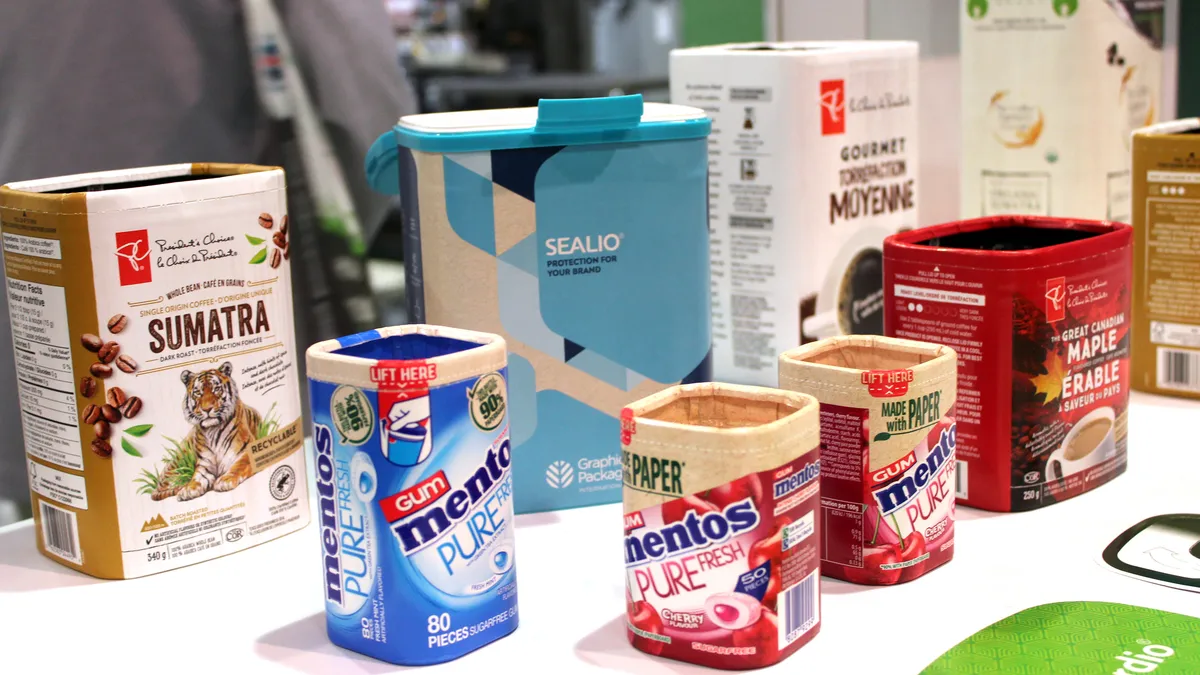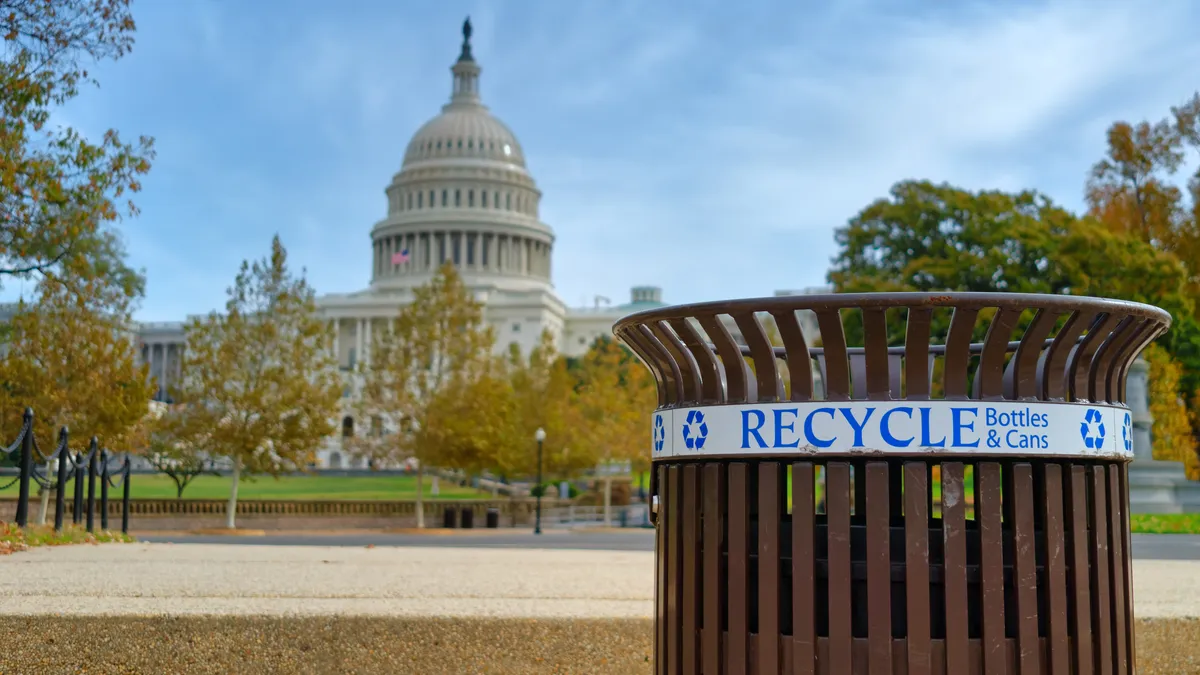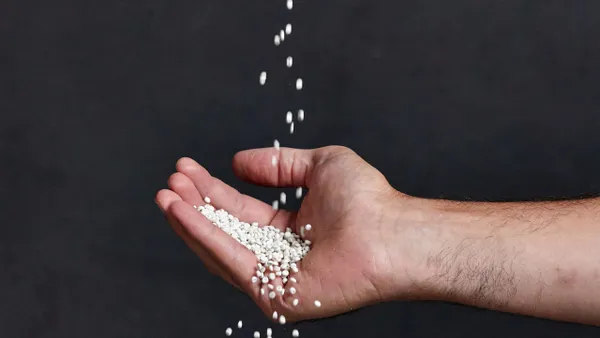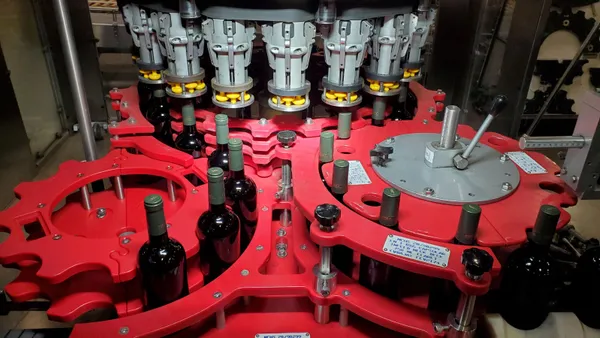Graphic Packaging International last year achieved two of the sustainability goals it set out to reach by 2025, according to its newly released 2022 ESG report, and now is advancing toward new goals validated by the Science Based Targets initiative. However, it backslid on other goals.
GPI reached the goal to reduce greenhouse gas emissions intensity by 15% by 2025, from a 2016 baseline, having reached a 26% reduction in 2022. At the same time, scope 1 and 2 emissions increased 6% from 2021 to 2022 and 20% overall compared with 2016. The report said that increase reflects the company’s growth, primarily greater operational demand from starting up the Kalamazoo line 2 (K2) paper machine in Michigan.
GPI also achieved the 2025 goal to reduce nonrenewable energy intensity by 15%, having reached a 24% reduction in 2022 compared with the 2016 baseline. Similar to the emissions trend, absolute nonrenewable energy use increased 22% versus 2016, which GPI again attributed to business growth.
The company now strives to establish absolute emissions reduction targets through the Science Based Targets initiative. It developed targets in 2022 and submitted the proposal to SBTi in Q1; SBTi’s review is underway and GPI anticipates learning more before the end of this year.
Similar to emissions intensity, GPI tracks its water effluent intensity, which mainly results from its mills. Progress toward the 2025 goal of a 15% reduction is stagnant at 0%; the report cites a 2% increase in intensity compared with the 2016 baseline. The increase mainly came from a change in 2021 to a river water intake system at one virgin mill, increased surface water use at two virgin mills and increased potable water use at K2. GPI expects the increase to be temporary. “We are working to understand the underlying causes for these increases and will adjust our stewardship approach as needed to ensure we get back on track to achieve our water goal,” the report said.
Another 2025 goal is for 100% of GPI’s revenue to come from recyclable products. In 2022, 95% of GPI’s revenue came from recyclable products, the same as in 2021. That’s down from 97% in 2019 and 2020. The report indicates 66% of products in 2022 were classified as “widely recyclable” based on accessibility and technical recyclability guidelines set by the Federal Trade Commission and/or the Ellen MacArthur Foundation.
The report highlighted the recyclability of certain new products, such as Boardio, a rigid fiber-based container that serves as a plastic replacement. Collectively with two other new products — PaperSeal paperboard food trays and KeelClip paper fasteners for beverage can multipacks — this accounted for more than half a million plastic packages being substituted with fiber in 2022.
Part of increasing product recyclability is reducing the use of plastic for certain fiber-based product coatings, especially for foodservice packaging and paper cups. Specifically, the company uses low-density polyethylene as a grease and moisture barrier, although that creates challenges with recycling the products at some mills. Thus, the company is working to find renewable barrier materials, such as biodegradable and bio-based polymers, to replace fossil-fuel based polymer coatings, such as biodegradable and bio-based polymers**; cups with those coatings “should be available for market deployment in the upcoming months.”
So far, GPI has reduced its LDPE use 15%, on the way to 40% by 2025. The report said that reductions in LDPE use in 2020 and 2021 mainly were driven by the pandemic prompting less in-store dining and food service packaging demand; LDPE use ticked up in 2022 as demand returned.
In addition to detailing the company’s sustainability efforts, the report also dug into GPI’s social and governance efforts. It notes that while 23% of its more than 24,000 total employees are women, 33% of the executive leadership team is women, up from 20% in 2021. About 30% of all employees consider themselves “ethnically diverse,” with 33% of the executive leadership team falling into that category, which is down from 40% in 2021.














